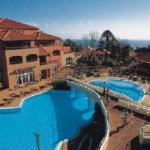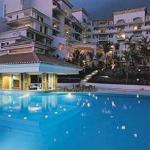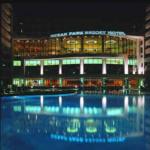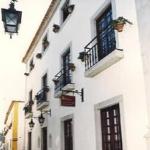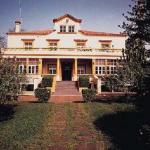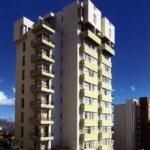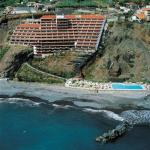Portugal Sights
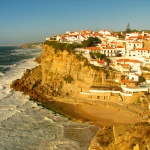 A fairly small area, Portugal nonetheless united in their land rich historical heritage and numerous ancient castles, cathedrals and palaces, the mild climate and beautiful beaches of the Atlantic Ocean, calm and welcoming people, and modern resorts. Beaches of the Algarve (southern provinces) and the island of Madeira, resort area of Estoril and Cascais, balneology resorts Caldas da Rainha and Caldas de Monchique, all this attracts the country for more than 10 million tourists from all continents.
A fairly small area, Portugal nonetheless united in their land rich historical heritage and numerous ancient castles, cathedrals and palaces, the mild climate and beautiful beaches of the Atlantic Ocean, calm and welcoming people, and modern resorts. Beaches of the Algarve (southern provinces) and the island of Madeira, resort area of Estoril and Cascais, balneology resorts Caldas da Rainha and Caldas de Monchique, all this attracts the country for more than 10 million tourists from all continents.Lisbon ( "beloved bay") - one of the most beautiful cities in the world, spread out on the hilly slopes of the valley of the river Tagus near its confluence with the ocean. The city has a well-recognizable "face", formed by an abundance of old buildings, steep stairs, cable cars, paved streets of old neighborhoods, many tiny gardens with ponds and convenient overview of terraces "Mirador". Center city is picturesque, paved with mosaic area Roseau with bronze fountains and colorful flower beds, a statue of King Pedro IV and the building of the National Theater of Dona Maria II. To the north of Roseau, the area is the area Reshtauradoresh with the pink palace, Palacio Foz, which begins the central thoroughfare of the capital - a framed kaschtanovymi alleys and built-up rich mansions, hotels, restaurants and elegant shops of Avenida da Liberdade (Liberty Avenue). It ends in a circular Marquês de Pombal (or Rotunda) with the monument to the Marquis-reformer in the center. To the north of the Rotunda on the slopes of the hill is spread an array of Green Park Edward VII.
On the waterfront Tejo is a beautiful area Praca do Comercio (Palace) with the monument to Jose I, which begins with the most city tours. On three sides the area is framed by the building of ministries and banks, and the fourth offering a panoramic view of the river. One of the symbols of Lisbon - decorated with bas-reliefs and statues of famous people arch, connecting the area with the Commerce Street, Augusta. Square in front of City Hall (1865) adorns the soaring stone columns Pelorinyu, a symbol of the city of justice, which in former times was used as a pillory. In the old western district of Belém is the most impressive architectural structure of Lisbon - Monastery Zheronimush (1502) in the style of "Manueline, founded in honor of the opening of Vasco da Gama of the sea route to India. In the pantheon of the monastery contains the tombs of Vasco da Gama, the poet Camoes, and King Manuel I, and in front of the monastery destroyed by a beautiful park with a monument to the discoverer. Another symbol of Lisbon is lying nearby, surrounded by the waters of the river, Torre de Belem (Torre de Belém) in the Portuguese Gothic style - a former lighthouse and a guard post, completely renovated in 1845, the street can be reached Belém Belém do Pará Palace, the residence of the President Republic, the former royal riding school and a unique museum of carriages. Hence it can be seen located on the left bank of the majestic statue of Christ with outstretched arms (height 35 m) and the famous "Bridge on April 25 - the longest bridge in Europe, the city (2278 m).
Founded by the Visigoths fortress of San Jorge (St. George, V in.) Located on a hill in the eastern part of the city. During its long history the fortress several times rebuilt, and served as a royal residence and prison, here Vasco da Gama celebrated the success of his expedition to India, and now from the observation platform of the fortress you can enjoy the splendid panorama of the city. Surrounding the foot of the fortress hill district of Alfama is the oldest part of town, here and starting again the Roman, and later a Moorish Lisbon. The low stone houses with tiled roofs flank the steep picturesque streets of the Alfama, cobblestone and flagstone cobblestone. Interesting Romanesque Cathedral of Se, which was built in 1150 on the site of the mosque as a symbol of the victory of Christians over the Moors - is the oldest temple of the city. For area attractions also include the Church of Madre de Deus (Mother of God, the beginning of XVI century.), The Museum of coaches in the heart of Vasco da Gama and the palace Mitra (XVII century.) With the Museum of Lisbon.
In the western part of town you should definitely visit the old quarter in the Bairro Alto, outside San Bento, and Amoreiras Ratu area, as well as the palace of the National Assembly (1834), Church of St. Vincent-up, Faure, Saint-Domingue and Loreto , Municipal Palace with elegant staircase, and numerous private residences of the Portuguese nobility and examine the Roman Aqueduct "free water" at 66 pm
The commercial center of Lisbon, the Baixa area, sharply differs from the rest of the city its clear layout of the streets. There were no palaces, nor churches, but the mass of banks and department stores. Here is one of the many cable cars - openwork metal tower Elevador de Santa Zhushta, built on the model of the Eiffel Tower in Paris, with a magnificent view of the upper and lower town.
The city has many beautiful parks, botanical gardens, interesting, and numerous museums, among which the most notable museum do Shiadu (Portuguese art of XIX-XX cc.), The National Museum of Ancient Art (painting XII-XIX cc.) Museum of Modern Art, the National Natural History Museum, Ethnographic Museum, the archaeological and naval museums, museum Kalosta Gulbenyana (a collection of art from the III century. BC. e. to the XX century.), a unique museum of ceramics, etc.
In the vicinity of Lisbon, there is a picturesque mountain range Arrabida and the beautiful coast of the Blue Beach and Costa do Sol, Azeytau aristocratic estates, and many towering medieval fortresses and castles turned into hotels - pouzady, cozy restaurants and cafes.
30 km. to the west of Lisbon is Sintra - the pearl of the Portuguese Riviera, and the entire country. This is the summer residence of Portuguese kings from the XIV to the XX century., City of royal palaces, exotic gardens, impregnable fortresses and castles, declared by UNESCO "heritage of mankind". It is in Sintra is eclectic Royal Palacio da Pena (Pena Palace, XIX century.) With a splendid park of 270 hectares, the palace Kashtellu dos Morush (Palace of the Moors), the royal palace Paco Real (XIV century.), The palace 'P (1747) and other unique examples of architecture. 20 km. north of Sintra is a giant palace-monastery complex Mafra (XVIII cent.), which combined an area of 10 hectares of the palace and monastery, as well as some 880 other buildings, including the marble basilica in Austrian style with a magnificent body and a rich library in which contains about 30 thousand volumes.
Porto - one of the most ancient cities and former capital of the country, appeared in VI. BC. e. on the right bank of the River Douro. Here it is interesting to visit the rebuilt of the old fortress Cathedral (XII-XVIII cc.) Granite tower Klerigosh (XVIII century., Elevation 75 meters - the highest church tower of Portugal), a Franciscan church of San Francisco (1233), City Hall with 70-meter bell tower (1920), a masterpiece of Portuguese Baroque architecture of the XVIII century. - Bishop's Palace with the Museum Machado de Castro, designed by Eiffel double-deck bridge over the Douro (length 172 m) and the São Bento railway station, with huge tiled paneled walls. Must be worth a walk on the Avenida dos Alyados with spectacular houses late XIX - early XX century, to visit the bustling seaside quarter of Ribeira, the famous wine cellars or a colorful and bustling market. The oldest botanical garden in Portugal, Porto (1772) is a beautiful example pozdnebarochnogo garden art, preserved beautiful old greenhouse and park lock type. In the suburb of Vila Nova de Gaia has been 300 years are the main port wine cellars for storage and placed a unique museum of port wine.
To the north of Porto is known since the II century. BC. e. city of Braga - an important industrial, cultural and religious center of the country, the residence of the bishop. 5 km. Braga of Portugal is sacred - standing on a mountain terrace height of 564 m. The church Bom Jesus do Monte (church of Christ on Calvary, 1723-1811 gg.) - one of the main centers of pilgrimage for the country. Near the church is divided magnificent park with many small chapels, fountains and ponds. The city is proud of and its architectural monuments, among which are the "Old Town" with dozens of churches and palaces on the small streets and squares decorated with fountains, Arch da Porto-Nova, also attractive to the Cathedral Choir-Duž-Reis (XIV century.) Town Hall (XVIII century.) Mizerekordia Church (XVI century.) Santa Cruz (XVII century.) Igreya-do-Carmo, Nostra Senhora a Branca, Igreya dos Terseyros, Chapel of St. Mark (XV -XVIII cc.) Casa dos Koimbras (1525) and others surrounded by a beautiful park, the Primate's Palace (XVII century.) now houses the Museum of Roman relics, a Roman sanctuary Fonte de-idol (I in. n . e.) is considered one of the best preserved in the country.
The Cradle of Portugal "is considered Guimaraes (founded in 840, 50 km. North of Porto), the birthplace of the first king of the country - Afonso Henriques I. There is an old fortress with seven towers on "Holy Hill", the old city streets, many houses and temples, and an interesting museum of religious art and utensils at the former convent and is located about 7 km. the south-east of the former monastery Mosteiró de Santa Maria da Costa (1154), transformed in our days in a chic hotel.
The south of Porto is one of the most ancient and beautiful cities in Portugal - Aveiro, declared by UNESCO "heritage of mankind". There are only preserved Roman temple in the country - the temple of Diana with 14 Corinthian columns, the Church of San Francisco with the "chapel of bones," the church of Santo Antao (XVI cent.), The Church of Our Lady of da Graça, Se Cathedral (1186 g .) Romano-Gothic church art museum and many other unique buildings.
The ancient university city of Coimbra is in the middle reaches of the river Mondego. His famous University - one of the oldest in Europe (founded in 1290). This is a unique complex of historical buildings, among which the most interesting colonnade Via Latina, a luxurious private lounge Sala dos Kapelosh, graceful Capella University, the clock tower with a bell and the old library (1716-1728 gg.). Among the architectural monuments of the city highlighted the close and intricate Old Town, the cathedral Se Velha in the Romanesque style (XII cent.) With the altar in 1508, the monastery of the Augustinian Santa Cruz (XVI cent.) With the tomb of the first king of Portugal, Afonso Henriques I, Museum Machado de Castro in the episcopal palace (XVI cent.), a beautiful bridge Ponte de Santa Clara, a park with a fountain of love ", a small museum-park" Portugal in miniature "," House of Tears "and the Roman aqueduct. At 16 km. to the south-west of Coimbra is located Fatima - the world-famous place of pilgrimage, two kilometers from a May 13, 1917 a miracle occurred the phenomenon of the Virgin Mary to children. Every year on May 13, hundreds of thousands of Catholics come here to worship the Virgin of Fatima. Pilgrim center is a large playground, esplanade in front of Basilica of the Holy Virgin from the local white limestone (to accommodate all the faithful, the area is made twice as much as St. Peter's Square in Vatican City, 1928) and the Church of Vision, built on the site of the miraculous phenomena. Currently, the city has acquired international importance are regularly conducted religious ceremonies, and at the Basilica rise to many religious orders.
It is interesting to visit the former capital of the dynasty Avishskoy - Evora, one of the oldest cities in the Iberian Peninsula, is known from the beginning I in. Mr. e. The main attractions of the city are the former Archbishop's Palace and the Cathedral Hsieh (1186), a Roman temple (II century. N. E.), The oldest aqueduct country - Agua da Prata, the palace of Count Basto, gallery Dash-Damas, churches Igreya de San Juan (1485), John the Baptist, Espírito Santo, São Mamede, San Francisco and others, as well as the palace-castle Palacio dos Duc de Kadaval, Praca do Zhiraldu with a succession of graceful arches, the University (founded in the XVI century.) Graça church and the palace of King Emanuel with a beautiful garden. In the interesting castle Bragança Bragança (1187), a medieval building of urban governance Domush-Munitsipalis, "Old Town" with the Cathedral (XVI cent.) And the central avenida with numerous outdoor cafes. Medieval Abbey of Santa Maria (XII - XIII century.) And the burial place of representatives of Burgundy dynasty in Alcobaça is also an important architectural monument of the country. Here is a wonderful museum of wine. In Batalha (20 km. To the south-west of Alcobaça), in a unique monastery of Santa Maria da Victoria (1385), are located the tomb of Henry the Navigator and representatives Avisskoy royal dynasty. In Tomar is like a fortress monastery of the Knights of Christ (1160), Church Charolais (XII century.) Synagogue (1460) with the museum Abraham Zakut, church Igreya de Sao Joao Baptista (V in.) Renaissance Igreya Basilica de Nossa Senhora da Conceição (XVI cent.), the monasteries of Santa Iria, Anunsiada, San Francisco and the castle of the Templars - another unique architectural and historical monument of Portugal with many beautiful buildings in the style of "Manueline" .
Former hunting palace of the Portuguese monarchs in the past Boussac nowadays transformed into a luxury hotel - one of the most romantic hotels in Europe, surrounded by centuries-old park, covering about 500 hectares. Chaves is famous for its thermal springs, the Roman fortress and the Church of Mercy. City-museum under the open sky Obidos, resting place of Portuguese monarchs, now under the protection of security monuments. In Setubal attractive Gothic church of Santa Maria (XVI century.), The church of San Jesus (1491), the castle Castello-San Felipe, the Roman temple of Diana and the City Museum with a collection of paintings by Portuguese artists XV-XVI centuries. and jewelry.
